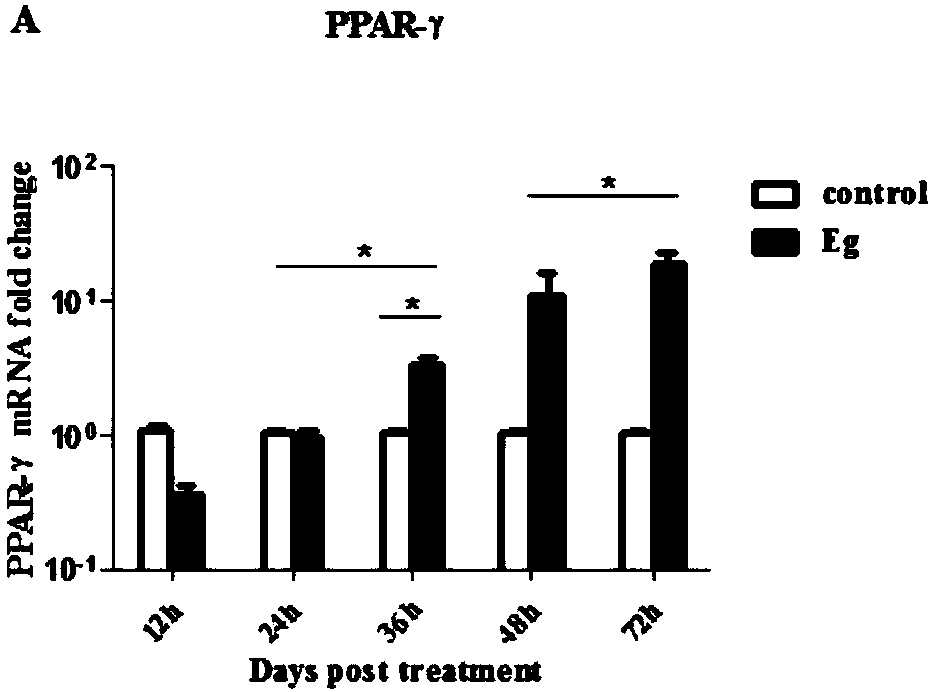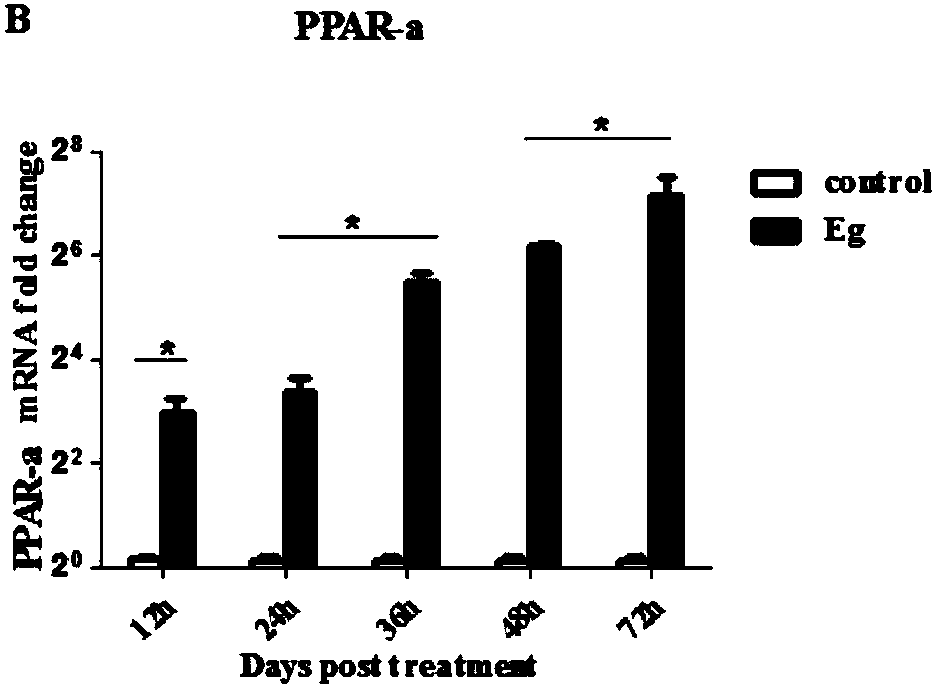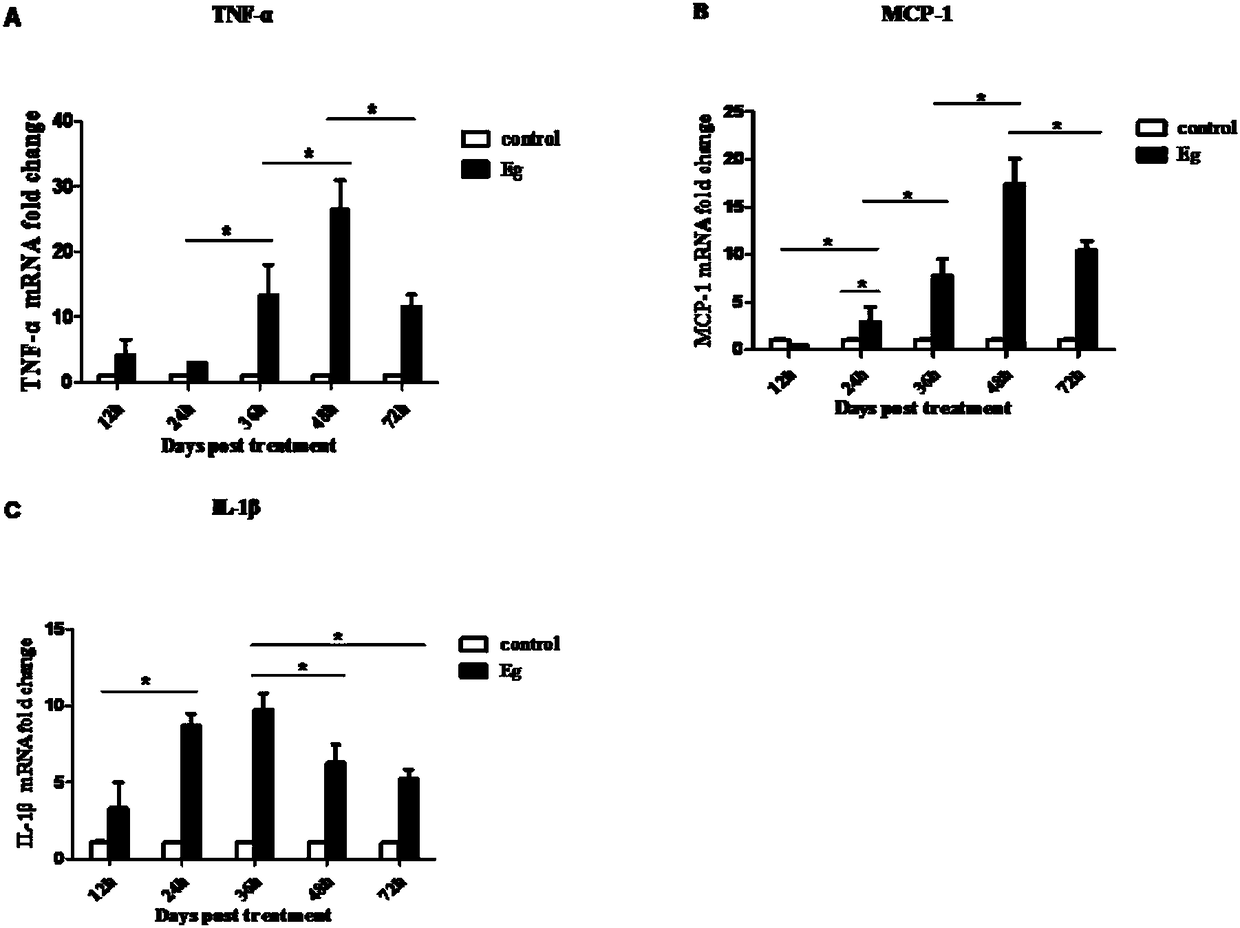Method for researching influence on macrophage polarization by PPARs
A technology that affects macrophages and polarization, applied in biochemical equipment and methods, pharmaceutical formulations, compound screening/testing, etc., can solve problems that are poorly understood
- Summary
- Abstract
- Description
- Claims
- Application Information
AI Technical Summary
Problems solved by technology
Method used
Image
Examples
Embodiment 1
[0099] Example 1: Changes of PPARs in the early stage of co-culture of RAW264.7 cells and Echinococcus granulosus and its regulation on macrophage polarization The expression levels of PPARs after RAW264.7 cells were infected with larvae, and the expression levels of M1 and M2 related factors in macrophages, so as to clarify the non-specific immune regulation of PPARs in the early stage of echinococcosis infection. It lays the foundation for further exploration of its role in Echinococcus evading the host's immune response.
[0100] 1 material
[0101] 1.1 Main instruments and reagents
[0102]
[0103]
[0104]
[0105] 1.2 Sources of main cells and pathogens collected
[0106] Cells: mouse macrophage cell line (RAW264.7) is preserved and stored in the laboratory.
[0107] Protozoan: the diseased liver of sheep infected with Echinococcus granulosus was obtained from the slaughterhouse in Changji City, Xinjiang.
[0108] 2 methods
[0109] 2.1 Preparation of prot...
Embodiment 2
[0180] Example 2: The expression level of PPARs in the early stage of co-culture of peritoneal macrophages and Echinococcus granulosus protoscoleum and its regulation on the polarization of macrophages
[0181] Objective: This study is to further study the role of primary cells on the basis of the previous cell lines, collect mouse peritoneal macrophages, and co-culture with Echinococcus to establish a model, and explore the PPARs after Echinococcus infection of mouse peritoneal macrophages and the expression levels of M1 and M2-related factors in macrophages, so as to clarify the non-specific immune regulation of PPARs in the early stage of echinococcosis infection. On this basis, PPARs inhibitors were used to down-regulate PPARs, and further elucidated its role in Echinococcus evading the host's immune response.
[0182] 1 material
[0183] 1.1 Materials and reagents
[0184] Main equipment name
production company
Protein Electrophoresis System
Ame...
Embodiment 3
[0280] Example 3: Early expression level of PPARs in mice infected with Echinococcus granulosus and its regulation on macrophage polarization
[0281] Objective: In this study, by establishing an animal model of BALB / c mice infected with echinococcosis, to further verify the expression level of PPARs in peritoneal macrophages of mice infected with echinococcosis, and the related factors of macrophage M1 and M2 types In order to elucidate the non-specific immunoregulatory effect of PPARs in the early stage of echinococcosis infection. And on this basis, PPARs inhibitors were used to down-regulate PPARs, and further elucidated its role in Echinococcus evading the host's immune response.
[0282] 1 material
[0283] 1.1 Materials and reagents (same as Example 2)
[0284] 1.2 Main pathogen collection and mouse source (same as embodiment 2)
[0285] 2 methods
[0286] 2.1 Collection, cultivation and activity identification of protoscoleiae (same as Example 1)
[0287] 2.2 Esta...
PUM
 Login to View More
Login to View More Abstract
Description
Claims
Application Information
 Login to View More
Login to View More - R&D
- Intellectual Property
- Life Sciences
- Materials
- Tech Scout
- Unparalleled Data Quality
- Higher Quality Content
- 60% Fewer Hallucinations
Browse by: Latest US Patents, China's latest patents, Technical Efficacy Thesaurus, Application Domain, Technology Topic, Popular Technical Reports.
© 2025 PatSnap. All rights reserved.Legal|Privacy policy|Modern Slavery Act Transparency Statement|Sitemap|About US| Contact US: help@patsnap.com



